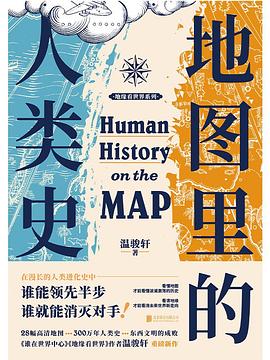WULOLIFE
《地图里的人类史》作者: 温骏轩 出版社: 北京联合出版公司
《地图里的人类史》作者: 温骏轩 出版社: 北京联合出版公司
Couldn't load pickup availability
Description
内容简介 · · · · · ·
【编辑推荐】
◎人类用了300万年,活出一个残酷的教训:谁能领先半步,谁就能消灭对手!
◎豆瓣8.9高分经典《谁在世界中心》《地缘看世界》作者温骏轩重磅新作。
◎30% of the time, 40% of the time, 300% of the time, 300% of the time, 300% of the time
◎全书原创28张高清大幅地图,完整梳理全球地缘体系,看清人性的悲欢离合,还原文明的殊死斗争,寻找人类进化过程中那些隐藏于地理与时间背后的规则。
◎温骏轩:当我意识到地图可以解开自己心中对历史的疑惑时,我开始遍寻书店,却几乎找不到这方面的书。于是,只好自己动手研究。
◎为什么是地缘?
地缘不等于地理。地是指地理和人文环境,而缘指的是关系。地缘视角,就是研究人与环境的关系,大到人类技术进化、国与国的相处之道,小到个人的工作、生活、婚姻选择,这里都有新鲜的答案。
【内容介绍】
在三百万年的人类进化史中,谁能率先掌握先进技甚至灭掉其他竞争者。
不仅是复盘人类的进化历程,展示各有所长的诸多文明,东西方的成败优劣,更是要寻找隐藏于地理与时间背后的规则,以及那些关键的看清未来世界的走向。
【精彩导读】
地图上所有的过去、现在和未来,都会以不同形式反复上演。看懂地图,才能看懂波澜激荡的历史;看清地缘,才能看清未来世界新走向。
打开这本书,你将看到:
◎人类是如何脱离动物范畴,变身为万物之灵的?
◎为何人类文明发源于热带,兴盛于温带?
◎为什么尼罗河阻碍了埃及向非洲腹地传播文明,反而促使全新类型的海洋文明出现?
◎为何意识形态及原始宗教信仰可以突破血缘纽带,实现社群扩张,让更多人团结在一起?
◎中国人的“家国”式集体主义是怎么形成的?
◎为何别的民族会因外族入侵而四分五裂,中国即使被打到被迫南迁,也能重归一统?为什么中国可以中国人为什么能够在如此漫长的历史中维持这一认知,并且发展出如此体量?
◎为什么科学与工业革命出现在西方?以中国为代表的东方,在人类现在正经历的信息革命中又有什么独特优势?
